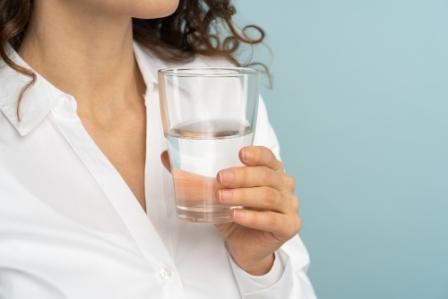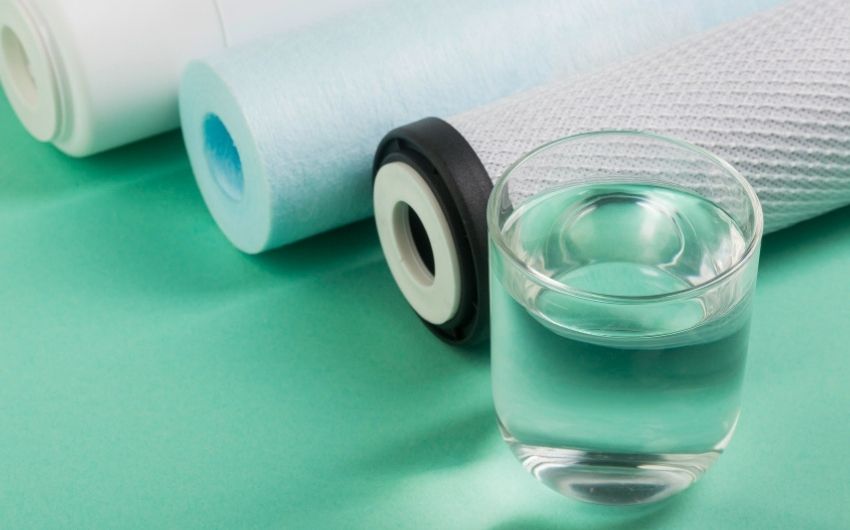According to the World Health Organization’s approach, access to drinking water is an indicator of human well-being. In developing countries, this indicator indicates that there is access to water free of pathogens and highly toxic compounds, leading to a sharp deterioration in well-being or death. In developed countries, water usually does not contain such hazardous contaminants, but its composition does not always meet world and state standards of drinking water.
One of the most important indicators, which is tightly controlled in tap water, is the number of pathogens and parasites. Water can be decontaminated with chlorine; in wells and wells, water is not decontaminated. Even though chlorine is the most effective method of water decontamination, there is damage to water and emergencies. For example, in January 2018 in Mykolaiv, several dozen people were infected with hepatitis A, and in April of this year in the Kyiv region, there was a massive infection of people rotavirus, the main reasons for this according to the responsible – the consumption of poor quality water and water from the spill points.
In addition, studies confirm that tap water often overestimates the concentrations of stiff salts, heavy metals: iron, aluminum, lead, chromium, manganese (depending on the region and the source of water intake). These substances tend to accumulate in the body and cause chronic diseases. For example, manganese can affect the nervous system and cause depressive disorders; iron can cause problems with the digestive tract (meteorism, nausea, vomiting). Salt stiffness in excessive quantities can provoke the formation of salt crystals in the renal tissue.
As indicated above, chlorine is the most effective decontaminating agent, but clinical studies have shown that its interactions with organic compounds are toxic and carcinogenic.
Even though we have not mentioned all the possible problems, we can conclude that “drinking water” is a rather conventional concept.
Now we will discuss reverse osmosis. The possible harm from its use is often used as an argument against domestic exploitation. We will try to understand whether opponents of osmosis at least share the truth.
On what physical phenomena is based the effect of reverse osmosis?
Reverse osmosis is a physical process in which water at a certain pressure passes through a semi-permeable membrane from a more concentrated to a less concentrated solution, in the opposite direction for osmosis.
At the same time, the membrane passes water but does not miss most of the substances dissolved in it. The size of the particles removed is 0.001-0001 microns, so 99.8% of impurities can be removed from the water, including hard and heavy metal salts, nitrates, pesticides, and even tiny virus particles.
For example, the average size of common pathogens and water pollutants:
- E. coli bacterium (E.coli) – 0.3 reaches 1 micrometer in diameter and 1-6 microns in length;
- Staphylococcus bacterium – 0.5 – 1 micron in diameter;
- Influenza A virus – 0.1 microns;
- hepatitis A virus (HAV) – 0.03 microns.
The principle of the reverse osmosis membrane is depicted in the image below.
Reverse osmosis technology has been used since the 1970s in the purification and desalination of drinking water, obtaining spotless water for medicine, industry, and other needs.
You can clearly understand the principle of the reverse osmosis membrane from the video:
The membrane elements of household and industrial water filters are made from polymer fiber, a chemically inert, safe food material.
Is reverse osmosis harmful?

Now let’s give rebuttals to those who say that the reverse osmosis filter is harmful.
1. Reverse osmosis removes vital minerals from the water, which harms a person.
The reverse osmosis membrane actually removes 99.8% of impurities from water, including calcium and magnesium salts, which are useful to humans in small amounts. But do not forget that their concentration in tap and well water usually exceeds the maximum permissible norms, which is the root cause of the formation of sand and kidney stones. It is also worth always bearing in mind the huge amount of heavy metal salts, chlorine, organic substances, and compounds. In addition, it is worth noting that the main amount of minerals is obtained from food with a full diet.
2. Cleansed water washes out of the body of useful substances.
This reasoning has no scientific basis, on par with the assertion that the earth has a flat shape. Saltwater cannot wash out the useful salts from the body, as they are deeply embedded in the cell structure, and water passes many physiological barriers and removes only those salts that the body tries to deduce as superfluous. In this regard, water purified by the reverse osmosis membrane has a great advantage, as it does not create additional strain on the human urinary system.
3. Cleansed water spoils teeth.
This misconception has no theoretical, much less practical evidence. Water purified by reverse osmosis:
- Has optimal pH, so it doesn’t damage the enamel;
- it has no harmful elements that accumulate in the body and cause metabolic disorders, as a result of which teeth are damaged.
4. Cleaned water has an unpleasant taste
Indeed, the water passed through the reverse osmosis membrane without further treatment has a neutral taste. But in recent years, there have been technologies of deodorizing and mineralization that create a wonderful taste and smell of treated water.
With mineralization, water passes through a filter filled with a low-soluble mineral filler of natural origin – calcite and is saturated with ions of useful calcium.
The deodorization of water involves its passage through a cartridge with high-quality activated charcoal from the coconut shell, after which the water gets a pleasant sweet taste.
What does the reverse osmosis purifier or filter look like?
Household Reverse osmosis filter installed under the sink in the kitchen and is a design that consists of several components.
1. Complex of three prefilters, which are installed for pre-cleaning water.
Usually, a set of such cartridges contains:
- polypropylene cartridge to remove mechanical impurities more than 5 microns (sand, rust, yl);
- activated charcoal cartridge, which removes pesticides, organic and chlorogenic impurities;
- a polypropylene cartridge or carbon block to purify water from mechanical impurities equals 1 micrometer. In the case of carbon block installation, there will also be residual removal of chlorine and chlorogenic substances.
2. Reverse osmosis membrane will remove 99.8% of impurities, including viruses and heavy metal particles.
3. The charcoal filter improves the taste and smell of water and gives the water a pleasant sweet taste.
4. The mineralizer restores the balance of useful calcium ions in the water, improving water taste (there are systems with it and without it).
5. The water tank provides a constant water supply for drinking and cooking thanks to a 7-liter volume. Filling the tank takes about an hour and a half.
All case and filter cartridges are made of safe food materials certified in Europe and the United States.
To make it easier for you to understand the design and scheme of the household water filter of reverse osmosis, we have made a video for you.
Benefits of reverse osmosis

1. Drinking water of perfect quality
We have already found out that the water purified by reverse osmosis is completely safe and beneficial for all family members.
2. Permanent access to clean water in your home.
You no longer need to carry water bottles to the pouring points and carry them back home.
3. Savings
The cost of water purified by reverse osmosis is much lower than the average cost of bottled and imported water.
Disadvantages of reverse osmosis
Despite the advantages of reverse osmosis filters, they certainly have several drawbacks.
The main drawback of such systems is their low performance – at the pressure that the water system creates, the sewerage system leaves up to 70% of the water. One liter of purified – can account for 3 liters of concentrate (or dirty water). This is bad because water consumption increases, and it, in turn, affects the cost of water and harms the environment.
Microsoft is constantly working on improving the equipment. We have released a new environmentally friendly filter that provides up to 70% of the release of purified water.
Less significant but tangible drawbacks are also:
- Filter dimensions (it takes up quite a lot of space under the sink);
- a rather high cost, which is leveled when calculating the cost of a liter of water and comparing it with bottled or imported;
- Install a pressure reducer in the case of “jumping” pressure in the pipeline, which is an additional cost and inconvenience when installing.
Comparison with other filters
How do your ro water filters differ from simpler devices that include triple filters and jug filters?
Flow filter
The triple filter is a three-cone structure with cartridges inside which provide three stages of water purification:
- Polypropylene cartridge removes mechanical impurities of more than 5 microns in the form of sand, rust, and silt;
- cartridge filled with a complex filtering material that removes heavy metals, stiff salts, toxic organic substances, pesticides;
- Carbon-block cartridge from compressed activated charcoal removes chlorine and organic impurities from the water.
Benefits of the triple filter:
- Simple installation
- No drain into the sewer;
- low cost.
The disadvantages of such a filter can be attributed to the low compared with the reverse osmosis degree of purification (the filter will not remove all pollutants, some of the mineral and microbiological contaminants will remain in the water). Water after such a filter should be boiled.
Jug filter
In the jug-type filter, the water is cleaned on a mixed cartridge.
The advantages of such a filter are low cost, no need to connect to the pipeline, ease of operation.
The disadvantages of such a filter include a limited degree of water purification (it will not remove viruses and some mineral contaminants), poor performance, the need to replace cartridges frequently.
Water after such a filter should be boiled.
We figured out what constitutes a household reverse osmosis filter, what benefit or harm they bring, the design features, advantages, and disadvantages of such reverse-cosmetic filters. We compared them with the existing filters for drinking water on the market. We hope that our material will be useful to you.
Frequently asked questions about the reverse osmosis
What is reverse osmosis?
Reverse osmosis is a membrane process that allows water to be cleaned of all types of contamination, including viruses, heavy metals, and chlorogenic substances. As early as 50 years ago, it was used to obtain water at Arctic stations and long-distance vessels. Today, such a filter can be installed in every apartment. What is reverse osmosis, and how it works? Read This Article.
How to connect the reverse osmosis filter?
Buy a reverse osmosis system is easy. You can go to the store and choose a suitable filter, and you can order delivery from the online store. This is followed by another important step – the installation of the filter. You can call the master or do it yourself. This article will tell you how to install the reverse osmosis filter with your own hands.


